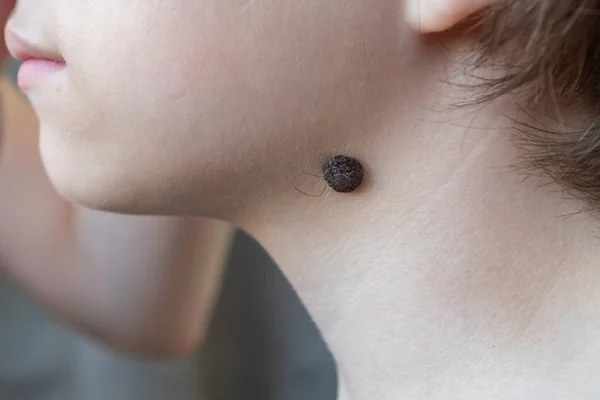Black Mole Inside Cheek: Understanding Causes and Treatment Options
What causes black spots inside the cheek. How to identify harmless vs concerning oral discolorations. When should you see a doctor for a dark spot in your mouth. What treatment options are available for oral pigmentation.
Common Causes of Black Spots Inside the Cheek
Discovering a dark spot inside your cheek can be alarming, but in many cases, it’s harmless. Several benign conditions can lead to oral discoloration:
- Oral nevi (moles)
- Blood blisters
- Melanotic macules
- Amalgam tattoos from dental fillings
- Smoker’s melanosis
Understanding these common causes can help alleviate concerns and determine when medical attention is necessary.
Oral Nevi: Benign Moles in the Mouth
Oral nevi are essentially moles that appear inside the mouth. They typically present as small, slightly raised dots that can be brown, bluish-gray, or nearly black in color. While they’re more commonly found on the roof of the mouth or inner lip, they can also develop on the cheeks.

Are oral nevi dangerous? Generally, these moles are harmless and don’t require treatment. There have been no reported cases of oral nevi becoming cancerous. However, to err on the side of caution, your dentist or doctor might recommend a biopsy to confirm the diagnosis and rule out melanoma.
Blood Blisters: Temporary Oral Discolorations
Blood blisters in the mouth can sometimes be mistaken for dark moles or spots. These fluid-filled sacs appear when the skin inside your mouth gets pinched or injured. They range in color from purple to dark red and are often large enough to be felt with your tongue.
How long do oral blood blisters last? Most blood blisters resolve on their own within two weeks without requiring treatment. However, if a blood blister persists beyond this timeframe or becomes a recurring issue, it’s advisable to consult your doctor.
Identifying and Managing Oral Blood Blisters
- Location: Typically form on soft tissues like cheeks or inner lips
- Sensation: Often painful when touched or exposed to spicy foods
- Duration: Usually resolve within 2 weeks
- Treatment: Generally not required; avoid disturbing the blister
Melanotic Macules: Harmless Hyperpigmentation
Oral melanotic macules are areas of hyperpigmentation in the mouth. These flat, well-defined spots average about a quarter of an inch in diameter but can be as small as 0.04 inches. While they’re non-cancerous, their appearance can sometimes mimic more serious conditions.

Should melanotic macules be biopsied? Although these spots are benign, your doctor may recommend a biopsy to definitively rule out melanoma, especially if the spot has changed in size, shape, or color.
Amalgam Tattoos: Dental Filling Residue
Amalgam tattoos result from the leakage of dental filling material into the surrounding oral tissues. These spots appear dark blue, gray, or black and are usually found adjacent to a dental filling. They’re relatively common and don’t cause any symptoms.
Do amalgam tattoos require treatment? In most cases, no treatment is necessary for amalgam tattoos. They’re permanent unless removed through laser surgery, which is typically done for cosmetic reasons rather than medical necessity.
Characteristics of Amalgam Tattoos
- Color: Dark blue, gray, or black
- Location: Often near dental fillings
- Symptoms: None
- Treatment: Usually not required; can be removed with laser surgery if desired
Smoker’s Melanosis: Tobacco-Induced Pigmentation
Smoker’s melanosis refers to the blotchy stains that can develop inside the cheeks and gums of tobacco users. Approximately 22% of smokers develop this type of oral pigmentation. While these stains don’t cause symptoms or require medical treatment, they can be aesthetically concerning for some individuals.

Can smoker’s melanosis be reversed? While quitting smoking can prevent further staining, existing pigmentation may persist. For those seeking removal, laser treatment or electrosurgery can be effective options. However, it’s crucial to have a biopsy performed first to rule out other conditions.
Rare but Serious: Oral Melanoma
While extremely rare, a dark spot inside the cheek could potentially be a sign of oral melanoma. This type of cancer accounts for less than 1% of all melanomas and about 1.6% of head and neck cancers.
What are the early signs of oral melanoma? In its initial stages, oral melanoma often presents as a dark brown to blue-black spot with minimal symptoms. It can also appear unpigmented or white. As the condition progresses, it may be accompanied by pain, ulceration, and bleeding.
Key Facts About Oral Melanoma
- Incidence: Extremely rare
- Average age at diagnosis: 56 years
- Gender distribution: Twice as common in men as in women
- Treatment options: May include surgery, immunotherapy, radiation, and drug therapy
Given the potential seriousness of oral melanoma, any persistent or changing dark spot in the mouth should be evaluated by a healthcare professional.

Systemic Conditions Causing Oral Pigmentation
In some cases, dark spots in the mouth can be indicative of underlying systemic conditions. Two such conditions are Peutz-Jeghers syndrome and Addison’s disease.
Peutz-Jeghers Syndrome
This genetic condition causes noncancerous growths in the intestines and stomach. Children with Peutz-Jeghers syndrome often develop dark spots on their lips, inside their mouth, and around their eyes, nose, and anus. These spots typically fade with age.
What complications are associated with Peutz-Jeghers syndrome? Individuals with this condition may experience abdominal pain, bleeding, or bowel obstruction due to the intestinal polyps. While there’s no cure, surgical removal of the polyps can help manage symptoms.
Addison’s Disease
Addison’s disease, also known as adrenal insufficiency, can cause hyperpigmented blotches inside the mouth. This condition results from a deficiency in hormones produced by the adrenal glands.
What are the symptoms of Addison’s disease besides oral hyperpigmentation? Other common symptoms include extreme fatigue, weight loss, salt cravings, low blood sugar, and hyperpigmentation of the skin. Treatment typically involves hormone replacement therapy to manage the condition.

When to Seek Medical Attention
While many causes of black spots inside the cheek are benign, it’s important to know when to consult a healthcare professional. Consider seeking medical attention if:
- The spot changes in size, shape, or color
- You experience pain, bleeding, or ulceration around the spot
- The spot persists for more than two weeks
- You have a history of cancer or are at high risk for oral cancer
- The spot is accompanied by other unexplained symptoms
A thorough examination by a dentist or doctor can help determine the cause of the spot and rule out any serious conditions. They may perform a visual inspection, take a detailed medical history, and potentially recommend a biopsy for definitive diagnosis.
Diagnostic Procedures for Oral Pigmentation
When investigating a black spot inside the cheek, healthcare professionals may employ several diagnostic techniques:
- Visual examination: A thorough inspection of the oral cavity
- Dermoscopy: Use of a special magnifying tool to examine the pigmented area in detail
- Biopsy: Removal of a small tissue sample for laboratory analysis
- Imaging tests: X-rays or CT scans may be used in some cases
These procedures help differentiate between benign conditions and potentially serious issues like oral melanoma.

Treatment Options for Oral Pigmentation
The treatment for black spots inside the cheek depends on their underlying cause. Here’s an overview of potential treatment approaches:
Benign Conditions
For harmless conditions like oral nevi, melanotic macules, or amalgam tattoos, treatment is often unnecessary. However, some individuals may opt for removal for cosmetic reasons. Options may include:
- Laser therapy: Effective for removing pigmented lesions
- Cryotherapy: Freezing the spot to remove it
- Electrosurgery: Using electrical currents to remove the pigmentation
Oral Melanoma
If oral melanoma is diagnosed, treatment is typically more aggressive and may involve:
- Surgery: To remove the cancerous tissue
- Radiation therapy: To target and destroy cancer cells
- Immunotherapy: To boost the body’s natural defenses against cancer
- Targeted drug therapy: To attack specific weaknesses in cancer cells
Systemic Conditions
For pigmentation caused by systemic conditions like Addison’s disease, treatment focuses on managing the underlying condition. This may involve hormone replacement therapy or other medications to address the root cause of the pigmentation.

Preventing Oral Pigmentation
While not all causes of oral pigmentation are preventable, there are steps you can take to reduce your risk:
- Practice good oral hygiene to maintain overall mouth health
- Avoid tobacco use, which can cause smoker’s melanosis
- Protect your lips from sun exposure with SPF lip balm
- Maintain a healthy diet rich in antioxidants
- Stay hydrated to support oral tissue health
- Attend regular dental check-ups for early detection of any issues
By following these preventive measures and being aware of any changes in your oral health, you can help maintain a healthy mouth and catch any potential issues early.
Living with Oral Pigmentation
For many individuals, living with benign oral pigmentation is simply a matter of acceptance. However, if the appearance of the spot causes distress or self-consciousness, there are ways to cope:
- Educate yourself about the condition to alleviate anxiety
- Discuss cosmetic removal options with your healthcare provider if desired
- Join support groups or online communities for individuals with similar concerns
- Practice stress-reduction techniques if the spot causes worry
- Focus on overall oral health and hygiene
Remember, in most cases, oral pigmentation is harmless and doesn’t affect your overall health or quality of life. However, always consult with a healthcare professional if you have concerns about changes in your oral health.
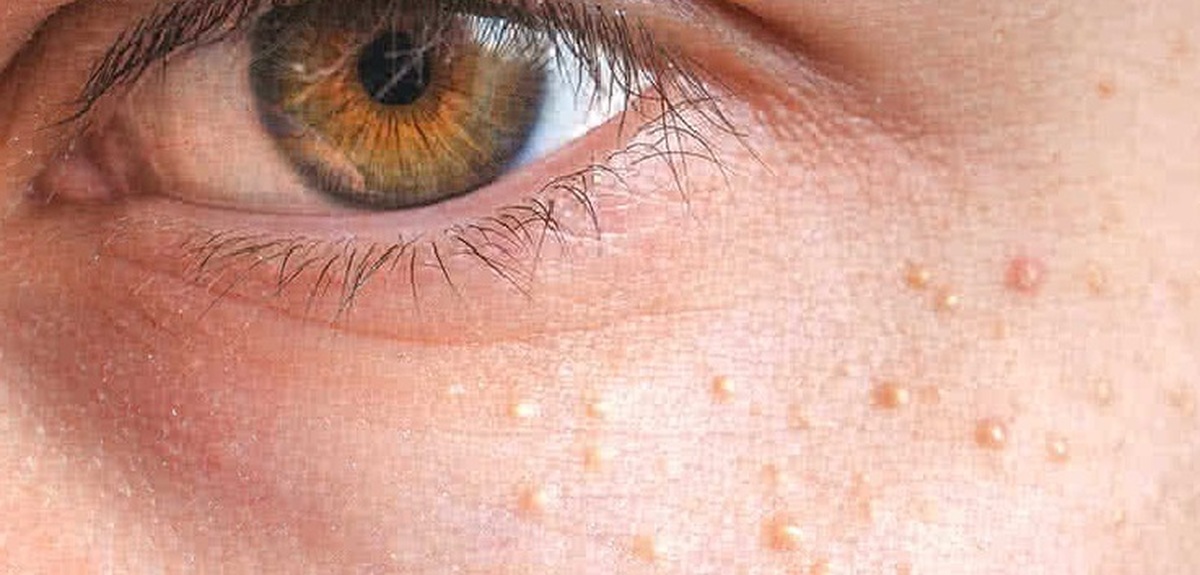
Causes and What Needs to Be Treated
Finding a black spot or dot on the inside of your cheek can be alarming, but it’s not necessarily a sign of something serious.
A variety of harmless conditions can cause discoloration in your mouth, such as moles, hyperpigmentation, and leakage from your dental fillings.
In extremely rare cases, a black spot may be a sign of a type of cancer called oral melanoma. Oral melanoma accounts for about 1.6 percent of cancers of the head or neck, and less than 1 percent of all melanomas, according to The Oral Cancer Foundation.
Keep reading to find out what may be causing a black spot on the inside your cheek and when you should see your doctor.
The following conditions may cause a black dot, a small, circular mark, to form on the inside of your cheek.
Oral nevi
Oral nevi are small brown, bluish gray, or almost black dots that can appear inside your mouth. Nevi is a medical term for moles (nevus is singular).
Oral nevi are usually slightly raised. They’re more common on the roof of the mouth or inner lip, but they can also form on the cheeks. They usually don’t cause any symptoms.
They’re more common on the roof of the mouth or inner lip, but they can also form on the cheeks. They usually don’t cause any symptoms.
No treatment is usually necessary for an oral nevus, and there are no reports of an oral nevus becoming cancerous. However, your doctor or dentist may still recommend getting a biopsy to make sure it’s indeed a nevus and not melanoma.
Blood blister
Blood blisters are sacs of fluid that fill with blood. They can range in color from purple to dark red. They commonly form when the skin in your mouth gets pinched.
Blood blisters are often big enough that you can feel them with your tongue. They most often form on the soft parts of your mouth, like your cheek or inner lips. They’re typically painful when touched, or if you eat spicy food.
The majority of blood blisters don’t last long and don’t need treatment if you leave them alone. But if the blood blister lasts for more than 2 weeks or becomes a reoccurring problem, it’s a good idea to visit your doctor.
Melanotic macules
Oral melanotic macules are areas of hyperpigmentation that average about a quarter of an inch in diameter. They can be as small as 0.04 of an inch. These spots are typically flat and have a well-defined border.
Oral melanotic macules are noncancerous, but your doctor may recommend a biopsy to rule out melanoma.
The following are potential causes of dark spots on the inside of your cheek. Spots can vary in size but they are larger than a dot.
Leakage from a dental filling
Amalgam is a material made of mercury, tin, zinc, silver, and copper. It’s been used for more than 150 years for dental fillings.
Amalgam tattoos are leakages from these dental fillings. They’re relatively common and usually appear dark blue, gray, or black. They’re most often located next to a filling.
Amalgam tattoos don’t cause any symptoms and don’t need treatment. They’re permanent unless removed with laser surgery.
Smoker’s melanosis
Smoking can leave blotchy stains called smoker’s melanosis inside your cheeks and gums. About 22 percent of people who smoke have this staining.
About 22 percent of people who smoke have this staining.
These stains don’t cause symptoms and don’t need treatment. However, your doctor will likely recommend a biopsy to rule out other conditions. The stains can be removed with laser treatment or electrosurgery.
Oral cancer
Melanoma is a type of skin cancer that affects pigmented cells called melanocytes.
Melanoma is most common on parts of your skin frequently exposed to sunlight, but it can also form in your mouth and nose. In extremely rare cases, a dark spot inside your cheek may be a sign of oral melanoma.
In its early stages, oral melanoma often has minimal symptoms. It usually manifests as a dark brown to blue-black spot. It can also be unpigmented or white. In its late stages, the spot may be accompanied by pain, ulcers, and bleeding.
The average age of diagnosis of oral melanoma is 56. Oral cancer is twice as common in men as women.
Treatment for oral melanoma may include:
- surgery
- immunotherapy
- radiation
- drug therapy
Peutz-Jeghers syndrome
Peutz-Jeghers syndrome is a condition that causes noncancerous growths called polyps in the intestines and stomach.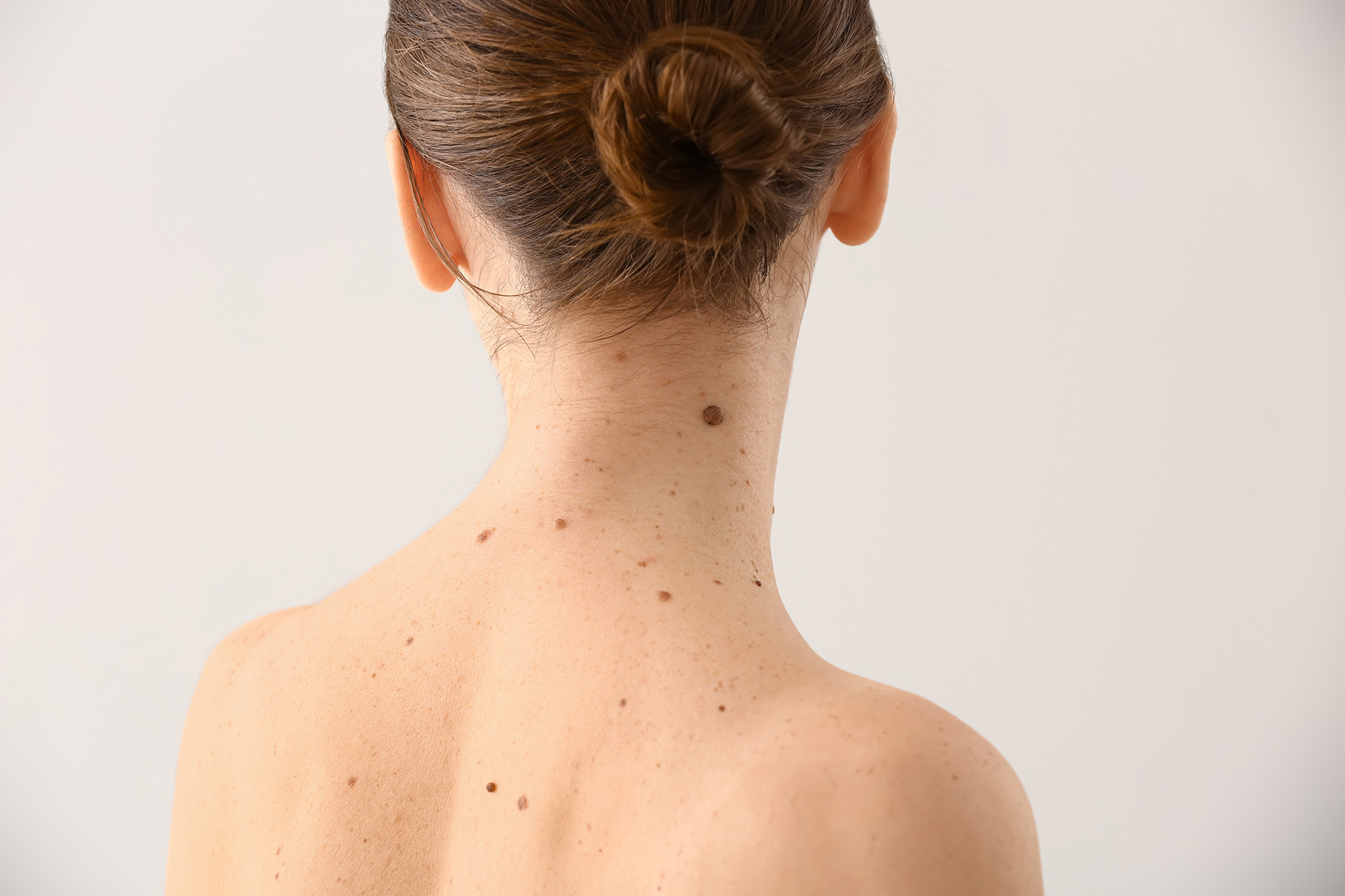
Children who develop this condition also commonly develop dark spots on their lips, inside their mouth, near their eyes and nose, and around their anus. The spots usually fade with age.
People with Peutz-Jeghers syndrome also often develop complications such as pain, bleeding, or bowel obstruction.
There’s no current cure for Peutz-Jeghers syndrome, but surgery can remove the polyps in the digestive tract.
Addison’s disease
Addison’s disease, or adrenal insufficiency, is a deficiency of the hormones produced by your adrenal glands. One of the symptoms of Addison’s disease is hyperpigmented blotches of skin inside your mouth.
Other symptoms include:
- extreme fatigue
- weight loss
- salt cravings
- low blood sugar
- hyperpigmentation
You can take medication to replace the hormones your adrenal glands can’t produce by themselves.
Even though the chances of developing oral melanoma is very low, it’s good practice to see your doctor whenever you notice an abnormally colored spot or dot in your mouth.
It’s especially important to get the spot checked if you’re older than 55 years. Older adults have a higher risk for developing oral cancer.
Your doctor may use the following tests to help confirm a diagnosis of the dark spot inside your cheek:
- Physical inspection. Your doctor may be able to identify the spot during a physical examination simply based on its appearance.
- Biopsy. During a biopsy, your doctor will cut away a small piece of the spot and send it to a lab for analysis.
- Blood test. Your doctor may administer a blood test measuring your potassium, cortisol, and ACTH hormone levels if they suspect Addison’s disease.
Finding a dark spot or dot in your mouth is unlikely to be a sign of cancer. However, it’s still a good idea to show it to your doctor or dentist. If it does turn out to be cancerous, getting an early diagnosis and treatment can improve your outlook.
Pictures, causes, treatment, and when to seek help
Black spots inside the cheek can have several causes, such as blisters or hyperpigmentation.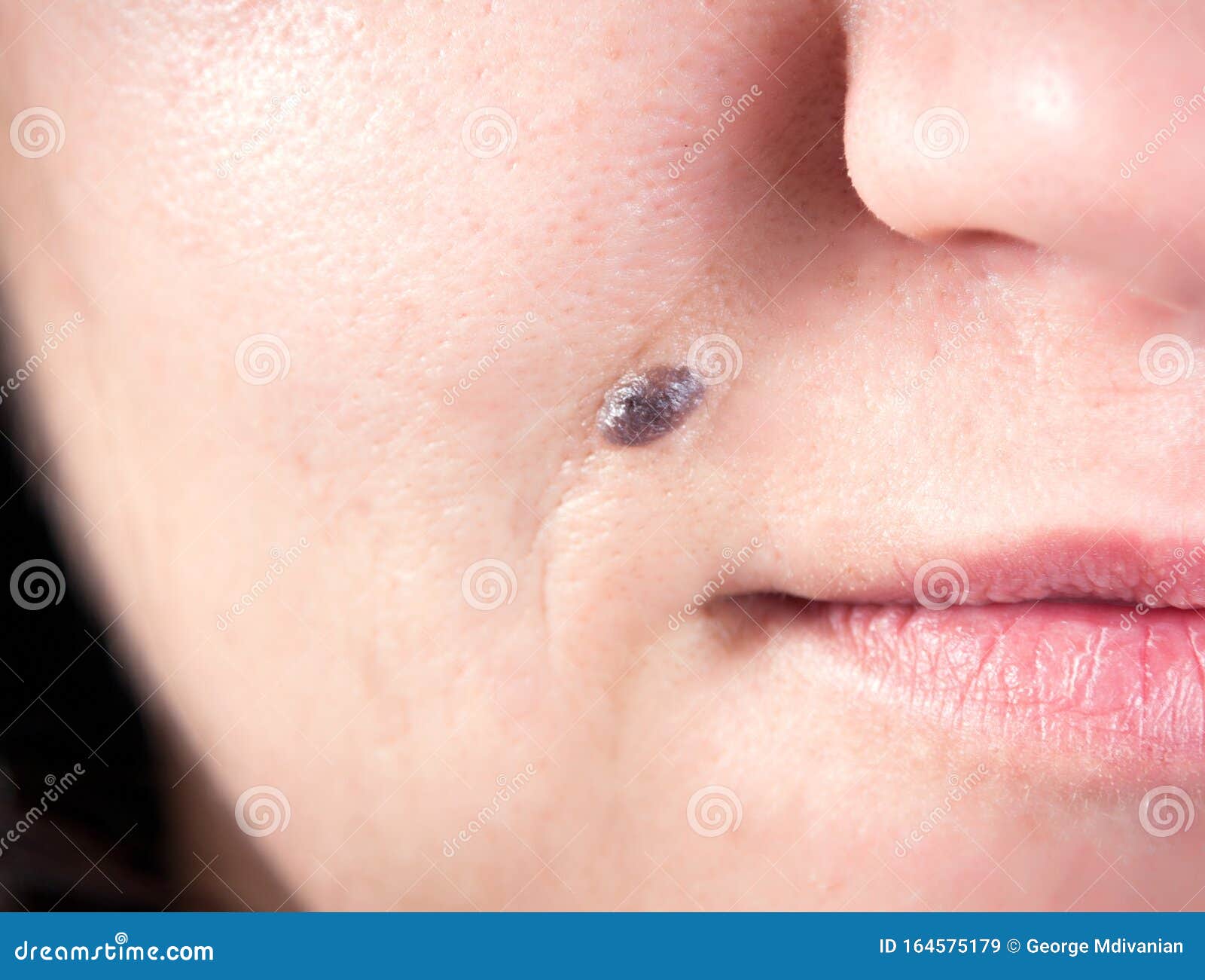 In rare cases, they may indicate something more serious, such as mouth cancer.
In rare cases, they may indicate something more serious, such as mouth cancer.
Many harmless conditions can cause a black spot to develop inside the cheek. Often, there will be no other symptoms, and it will improve without treatment.
Rarely, however, a black spot inside the cheek may be a symptom of oral melanoma. This is a rare type of cancer.
The American Cancer Society estimate that just over 54,000 people will develop mouth or throat cancer in 2021. Melanoma usually accounts for 0.5% of all oral cancers.
This article will examine some potential causes of a black spot inside the cheek. It will also look at some treatment options and when a person should contact their doctor.
Blisters are raised bubbles on the skin with fluid inside. They can occur anywhere on the body, including in the mouth.
Blood blisters contain blood and appear dark red or purple. They may develop in the mouth due to accidentally biting the cheek or as a result of an allergic reaction.
Learn more about blood blisters in the mouth here.
Treatment
Blood blisters are not typically harmful, and they will often heal without treatment.
Sometimes, however, they may cause pain or discomfort. In these cases, a person can use over-the-counter (OTC) pain relief medication.
Amalgam tattoos occur when metal fillings leak, causing dark marks to appear inside the mouth.
These marks can appear when a dentist places or removes a filling and tiny metal fragments fall between the teeth.
They most commonly appear on the gum or cheek, near the amalgam filling. However, they can appear anywhere in the mouth.
Treatment
Amalgam tattoos do not cause any symptoms or require any form of treatment.
Smoking can cause smoker’s melanosis. This is a condition wherein brown or black pigmentation develops inside the mouth and throat.
Treatment
This condition is not harmful, and it does not require treatment.
However, the tobacco smoke that causes these spots is harmful to various areas of the body. For example, smoking can cause gum disease, tooth loss, and mouth cancer, as well as several other conditions.
For example, smoking can cause gum disease, tooth loss, and mouth cancer, as well as several other conditions.
Melanoma is a cancer of the pigment-making cells, or melanocytes, that typically affects the skin. However, these cancers can also occur on mucosal membranes, such as in the mouth.
Oral melanoma usually appears as a raised area that has a black, brown, or dark blue appearance. These marks can be asymmetric with an irregular border.
There may also be swelling, if inflammation is present.
One 2020 article notes that oral melanoma is not related to sun exposure. Healthcare professionals are unsure about what the risk factors may be, but they may include:
- dental irritation
- cigarette smoking
- alcohol consumption
Treatment
The main treatment option for oral melanoma is surgery. A healthcare professional may also recommend radiation therapy.
Addison’s disease is an endocrine disorder that occurs when the adrenal glands, which are the glands on the top of the kidneys, do not make enough of certain hormones. These include cortisol and aldosterone.
These include cortisol and aldosterone.
The National Institute of Diabetes and Digestive and Kidney Diseases note that Addison’s disease can cause the development of darker areas on the skin and inside the mouth.
Other symptoms can include:
- chronic fatigue
- muscle weakness
- abdominal pain
- weight loss
- appetite loss
Treatment
Treatment for Addison’s disease will include hormone replacement medications. People can take a corticosteroid, such as hydrocortisone, to replace missing cortisol. They will take an oral tablet two or three times per day.
To replace aldosterone, a person can take fludrocortisone to help balance the amount of fluid and sodium in the body.
Peutz-Jeghers syndrome is a rare genetic condition that causes dark freckles to appear around the face and inside the mouth. It may also cause mushroom-shaped tissue growths called polyps to develop throughout the gastrointestinal tract.
Peutz-Jeghers syndrome can also cause other symptoms, including:
- nausea
- vomiting
- stomach pain
- rectal bleeding
- digestive issues
Treatment
There is currently no cure for Peutz-Jeghers syndrome.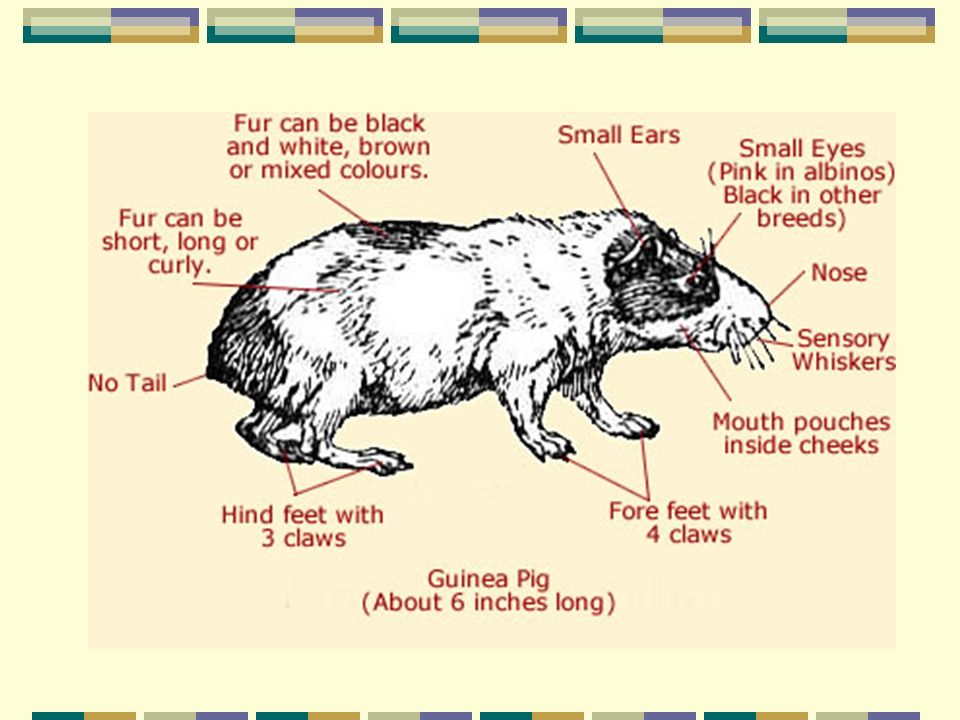 However, treatments may involve surgically removing any polyps that are causing gastrointestinal problems.
However, treatments may involve surgically removing any polyps that are causing gastrointestinal problems.
A doctor or dentist will perform a physical examination of the black spots to determine the cause. Also, they will likely ask the person whether or not the spots are painful or have any accompanying symptoms.
A doctor may also check a person’s medical history for any signs of genetic conditions, such as Peutz-Jeghers syndrome, that could be the cause. They might also review the person’s dental records for the presence of metal fillings.
Depending on their assessment, a doctor may also order additional tests to make a firm diagnosis. For example, they might require a blood test or skin sample for further analysis.
Many causes of black spots inside the cheek, such as amalgam tattoos, are harmless.
Although no medical treatment is necessary for some causes of a black spot in the cheek, a person should contact a doctor about any sore or spot that lasts for longer than 3 weeks.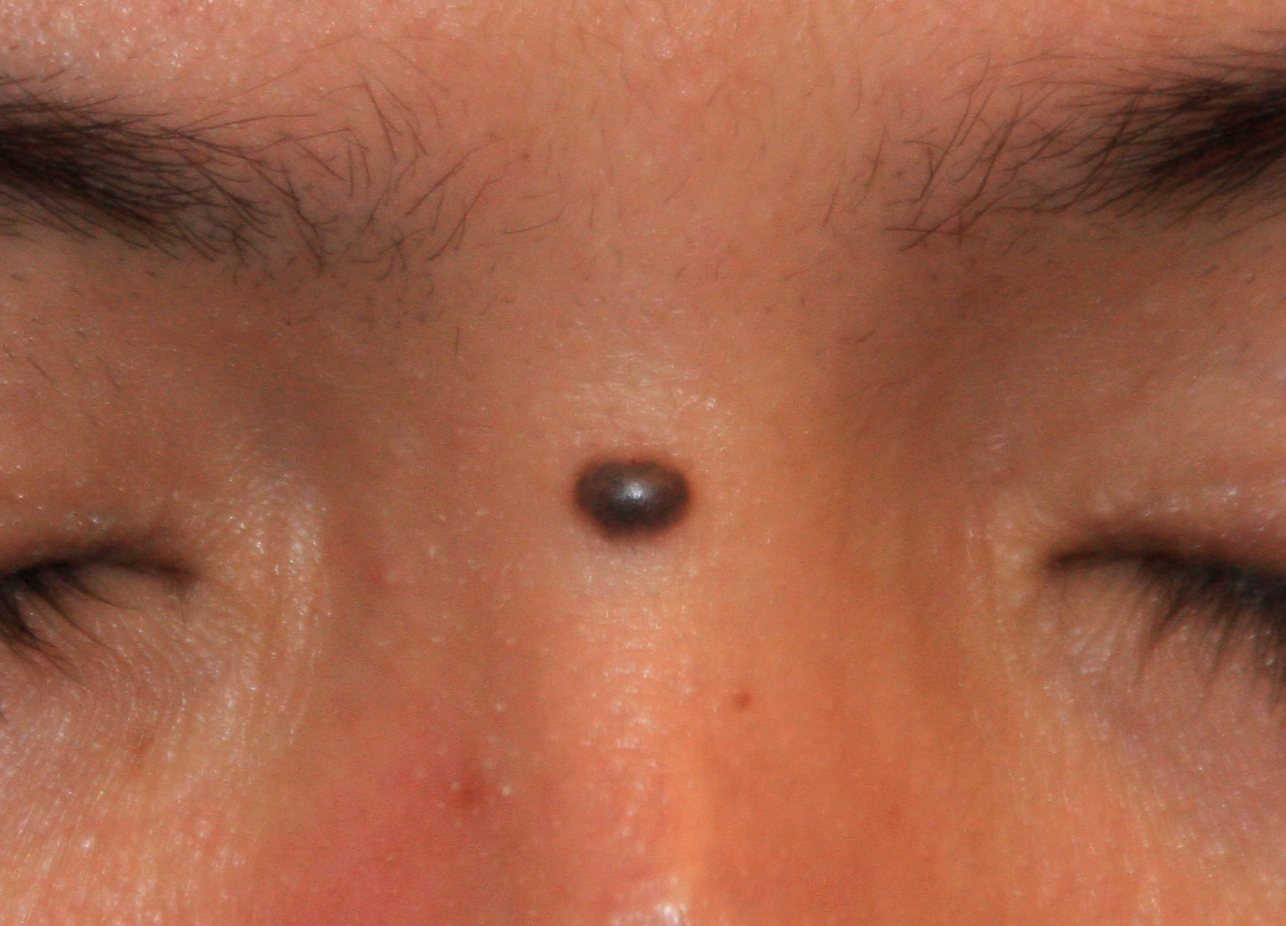
If the black areas develop sores or ulcers, these could be symptoms of mouth cancer. Early detection of mouth cancer is crucial for successful treatment.
There are many possible causes of black spots inside the cheek. For most people, these spots will cause no additional symptoms and will not require treatment.
Some people may require OTC treatments for causes that cause pain, such as blood blisters. Other causes, such as mouth cancer, will require medical treatment.
Although black spots inside the mouth may be harmless, it is worth contacting a doctor about persistent cases. They can help determine whether the spot is harmless or requires further care.
90,000 possible causes and treatments. Mouthwashes. Dental Anti-Inflammatory Gel
Dentists recommend having periodic check-ups so that problems can be noticed in a timely manner. If a black dot is found in the mouth on the cheek, then this may indicate the onset of inflammation or injury. It is very important to detect the existing problem in a timely manner and start treatment with drugs, as well as use mouth rinses. In some cases, antibiotic therapy is required.
In some cases, antibiotic therapy is required.
Causes of appearance
If a black dot has formed in the mouth on the cheek, this may be due to an injury. It can be in case of accidental biting of delicate tissue. A small hematoma remains at the site of the injury, which resembles a dot or a black bump. This is a common bruise or bruise located inside the mouth. Damage can be done in another way, namely:
- when biting a hard object;
- while eating;
- for bruxism.
Often a black dot inside the cheek occurs as a result of constant friction and pressure on the mucous membrane. The problem is quite relevant after the installation of braces. Sometimes the orthodontist violates the technology or does not twist the structure well enough. When talking or chewing, it scratches the gums, leaving behind black bruises. In this case, you need to remove all the lining and repeat the procedure.
If a black dot regularly appears in the mouth on the cheek, the dentist should check the integrity of the teeth. A destroyed crown can scratch and injure the mucous membrane with a sharp edge. With the traumatic formation of dark hematomas, no special treatment is required. After the cause is eliminated, they resolve on their own without a trace. With repeated injury, there may be an open wound that becomes infected with bacteria. Therefore, large hematomas inside the cheeks must be treated with special ointments.
A destroyed crown can scratch and injure the mucous membrane with a sharp edge. With the traumatic formation of dark hematomas, no special treatment is required. After the cause is eliminated, they resolve on their own without a trace. With repeated injury, there may be an open wound that becomes infected with bacteria. Therefore, large hematomas inside the cheeks must be treated with special ointments.
Rashes in the mouth: photos, causes
Rashes in the mouth are a fairly common problem that many patients face outside …
Signs and symptoms
The reasons for the appearance of a black dot in the mouth on the cheek can be different. All of them are united only by the fact that as a result a hematoma is formed, filled with bloody contents.
When an infection joins, additional symptoms may occur, such as:
- general malaise;
- temperature increase;
- weakness;
- puffiness;
- blistering;
- appearance of ulcers in place of blisters;
- itching or soreness;
- decreased appetite;
- bad breath.

Sometimes general malaise is accompanied by enlarged lymph nodes. If these symptoms appear, you should contact your dentist for diagnosis and treatment.
First aid
If black dots have formed on the inside of the cheek, then you should not resort to self-treatment, but it is simply necessary to provide first aid to a sick person. In case of painful sensations, they can be alleviated with a solution of soda. It is also useful to rinse the mouth with decoctions of medicinal herbs.
“Maalox” will help to anesthetize in a short time. This remedy causes numbness in the mouth and has an analgesic effect.
Carrying out treatment
If you bit your cheek, an ulcer has formed, what to treat, only the dentist can determine after the examination. If the blood clot interferes, then such a bubble can be punctured. The doctor also prescribes rinsing with antiseptics, in particular, such as Furacilin or Chlorhexidine. You can also carry out oral baths with decoctions of chamomile herbs or oak bark.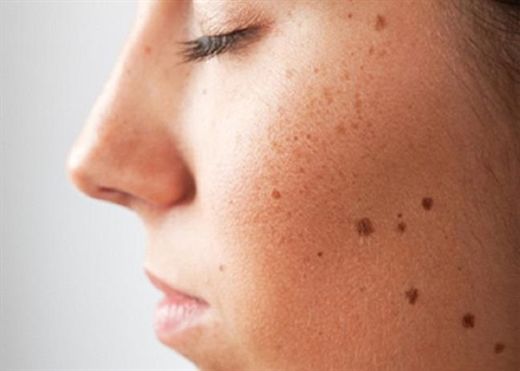 These solutions help eliminate signs of inflammation.
These solutions help eliminate signs of inflammation.
Eruption in the mouth: photo, causes
Eruption in the mouth is a fairly common problem that many patients face outside the…
In addition, sores in the mouth appear due to weakness of blood vessels. To strengthen their walls, you can use vitamin A, C, E, K, vitamins of group B. You can also stimulate and maintain immunity. To do this, it is recommended to take multivitamin preparations that contain all the required substances.
When the cheek is bitten from the inside, what to treat, the doctor will determine after the diagnosis, since there is no universal method. It all depends on the disease. During therapy, it is important to eliminate the provoking factor.
In case of aphthous ulcers, the use of anti-inflammatory gels and rinsing of the mouth with Chlorphyllipt and Cholisalom is indicated. As a means for topical application, the doctor prescribes antiviral, healing drugs and antiseptics. The acute course of the disease requires the use of antibiotics.
The acute course of the disease requires the use of antibiotics.
Treatment of pemphigus involves the use of hormonal corticosteroids. In this case, the therapy is carried out in a hospital. When new rashes appear, maintenance dosages of drugs are prescribed. For a speedy recovery, rinsing the mouth with Miramistin is required, as well as the use of anesthetic gels and ointments. To normalize the functioning of the immune system, multivitamin complexes are prescribed.
Treatment of hematoma on the buccal mucosa must necessarily take place under the supervision of a doctor. Self-medication is not recommended, as this can only aggravate the problem.
Mouth rinses
Proper oral hygiene includes the use of mouth rinses. If a person complies with all the rules, then he visits the dentist, only for the purpose of prevention. There are many different rinse aids, so it is important to choose the right one for you. According to the reviews and recommendations of dentists, the most popular are such tools as:
Blisters in the mouth: possible causes, diagnosis, therapy,.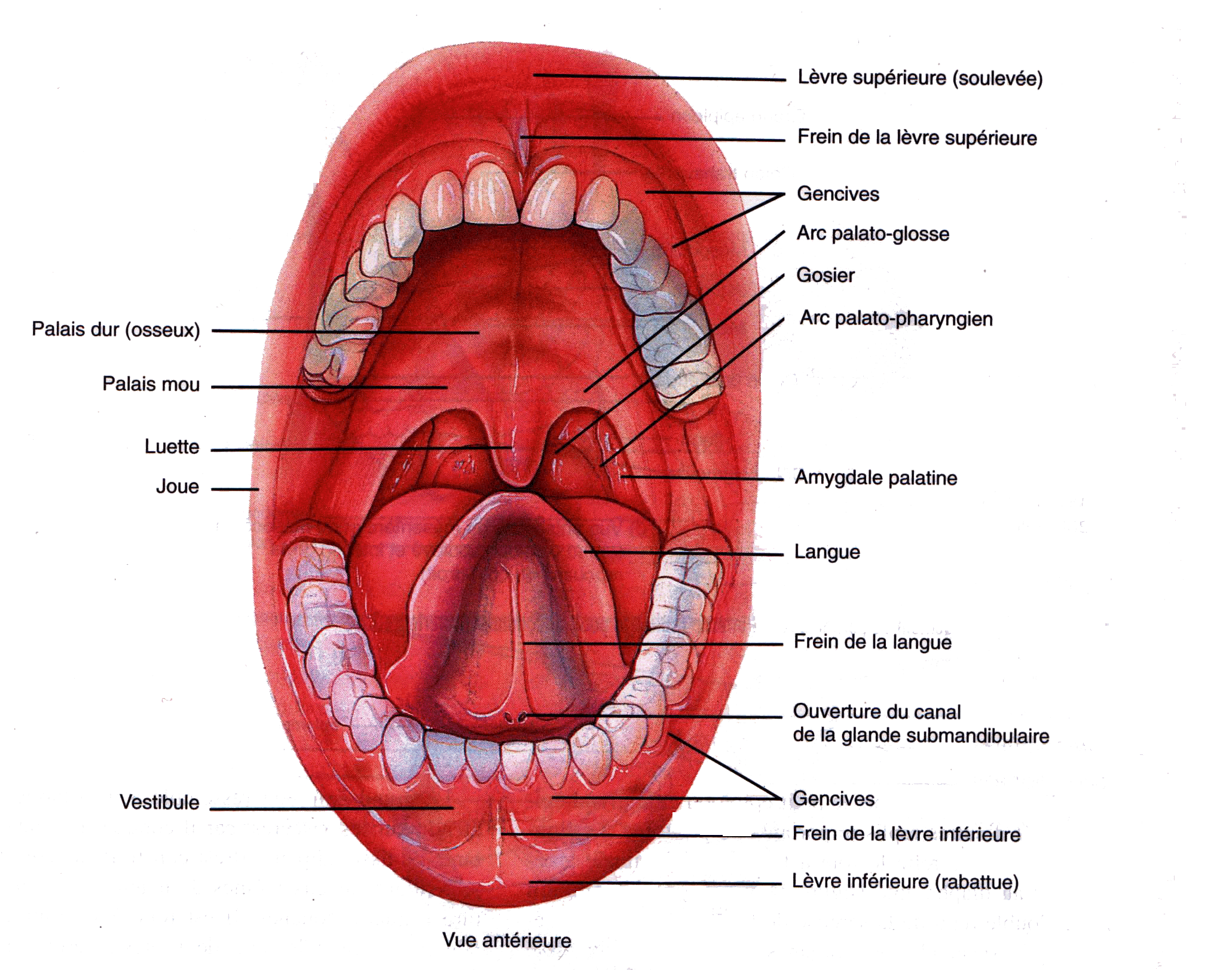 ..
..
Mucous membranes in the oral cavity are susceptible to the development of primary dermatological diseases…
- Listerine;
- “Splat”;
- Lakalut;
- Asepta;
- Paradontax;
- Colgate.
Listerine mouthwash is very popular. The price and instructions of this tool are affordable, so everyone can easily use it. The conditioner contains anti-inflammatory substances in its composition. It is used for periodontitis, helps to eliminate gum disease and bad breath.
It has a reasonable price. The instructions for the Listerine mouthwash indicate that it protects the mucous membranes and teeth, is easy to use, and also creates a slight whitening effect. The disadvantages include a not very pleasant sharp aftertaste, as well as the appearance of a burning sensation in the mouth.
The well-known antibacterial agent “Splat” has a whitening effect, has an anti-inflammatory and hemostatic effect. It prevents the formation of stone and plaque, which means it prevents the development of periodontitis. Does not contain alcohol and fluorine.
Does not contain alcohol and fluorine.
Mouthwash can be used to prevent many diseases. It has a pleasant aroma, as well as an affordable price. Of the minuses, a specific aftertaste and high concentration should be noted.
Elmex Rinse does not contain antiseptics and alcohol and is used to protect enamel. It can be used daily. Approved for use by children from 6 years of age. It freshens breath and cleans the mouth. The disadvantages include the high cost of funds.
The Italian preparation President is made on the basis of medicinal herbs. It does not contain alcohol and has anti-inflammatory and antibacterial effects. This tool reduces the risk of tartar formation and reduces the sensitivity of the enamel. It has a pleasant aroma and taste, but its cost is quite high.
Colgate Total Pro’s unique mouthwash formula helps fight bad bacteria in your mouth, helps reduce bleeding and gum disease, and freshens breath. It has a pleasant aftertaste and is suitable for daily use.
Lacalut Active rinse has an astringent effect and is used for bleeding gums. This remedy protects the teeth well. It is used in courses of 21 days. Does not contain alcohol. It has a pleasant taste and aroma.
“Asepta” contains two antiseptic substances, due to which it has an analgesic and antibacterial effect. It is used for inflammation of the gums. The course of therapy is no more than 2 weeks. Otherwise, dysbacteriosis may develop.
According to the instructions for use, chlorhexidine bigluconate 0.05% is used to combat pathogenic microorganisms in the oral cavity. That is why, it is widely used in dentistry. The drug has no age restrictions, but for children 3 years old, special care must be taken when using it.
Rashes in the mouth: photos, causes
Rashes in the mouth are a fairly common problem that many patients face outside…
You can also use chamomile to rinse your mouth. This is a natural remedy that has a pronounced anti-inflammatory effect and has practically no contraindications.
What is it used for
Quite a lot of discomfort is caused by biting the cheek from the inside. What to treat, many people who are faced with this problem are interested in. To prevent the development of an infectious process, rinses are used. In addition, they are indicated for complex oral care and for:
- bacterial control;
- prevention of tartar formation;
- caries protection;
- strengthening of tooth enamel;
- elimination of bleeding gums.
Even the most thorough brushing of teeth cannot completely eliminate all bacteria, as most people do not pay enough attention to cleaning the inside of the cheeks and tongue. It is on the mucosa that a significant part of the bacteria accumulates. The use of rinses helps to reduce the number of bacteria, as well as reduce the likelihood of their growth and reproduction. Pathogenic microorganisms provoke the appearance of bad breath, and also contribute to the development of dental diseases.
Tartar is hard formations on the enamel. They can only be removed by professional teeth cleaning. To prevent this problem, you need to use a rinse aid that slows down the process of plaque formation. It also reduces the acidity of the oral cavity and reduces the risk of caries to a minimum.
Rinses contain fluorine, which has a mineralizing effect on the enamel. Also, this tool reduces the sensitivity of the teeth, as it normalizes the level of acidity and reduces the effect of irritating substances on the enamel. The active ingredients that make up the product destroy pathogens.
How to choose the right one
Each type of rinse is designed to solve a specific problem, as it contains a specific set of active ingredients. When choosing a tool, you need to focus on the existing problem. If you bit your cheek, then the following types of preparations are suitable:
- elixirs for gums;
- antifungals;
- dry;
- against caries.

Elixirs have an anti-inflammatory effect, improve the microflora of the oral cavity. In addition, they eliminate puffiness, increase blood circulation, and heal wounds. These should be used before brushing your teeth.
Antifungals contain iodine. They are indicated for people with thyroid diseases. This remedy is rubbed into the gums up to 4 times daily. Dry are used for purulent inflammation. They are available in powder form. They must be diluted with water before use. Not suitable for daily use.
For regular use, it is better to buy products based on herbal extracts. You need to pay attention to the composition of the product. If it contains ethyl alcohol, then it should not be used by drivers and children.
Anti-inflammatory ointments and gels for the mouth
If you have bitten your cheek and an ulcer has formed, many people are interested in treating it, as it causes significant discomfort. Treatment in this case should be timely and comprehensive. An integral part are dental gels that help eliminate inflammation and pain. They can be used on the recommendation of the attending doctor after the examination.
An integral part are dental gels that help eliminate inflammation and pain. They can be used on the recommendation of the attending doctor after the examination.
Before deciding on the choice of medicine, you need to study the chemical composition so as not to harm the oral mucosa and human health. The analgesic effect is exerted by such drugs as Solcoseryl, Cholisal, Apident Active.
Cholisal promotes the elimination of puffiness, suppresses the attack of pain and removes increased bleeding of the gums. The medicine must be injected into the gum pockets and after that do not eat for 30-40 minutes. The course of treatment is 10-14 days.
Solcoseryl accelerates the recovery of damaged tissues. After the first application, inflammation disappears, the gums are restored, and an acute attack of pain is also eliminated.
Apident Active is made on the basis of propolis. Active ingredients eliminate pain and inflammation. Anti-inflammatory drugs include Kamistad, Metrogil Denta, Asepta.
When purchasing a drug, you need to study the instructions for use and reviews about Metrogil Dent. The price of the product is affordable, and the result is noticeable almost immediately after use. This is a combined remedy, made in the form of a gel. It contains antibiotic and antiseptic. This combination contributes to the rapid disposal of pathogenic microflora.
The drug “Kamistad” is a gel that contains components of plant origin. It helps to quickly eliminate inflammation and provides analgesic effect.
How it works
Gels and ointments are an adjunct to antibiotic therapy. They have anti-inflammatory and regenerating effects, accelerating the healing process.
Such products are highly effective, firmly fixed on the gums and do not have an unpleasant odor, providing a fairly good access of active ingredients to hard tissues. They include antiseptic and antibiotic. The result of its application is noticeable after the first procedure.
How to use it correctly
Before using the gel, you need to consult a doctor and read the instructions for the drug.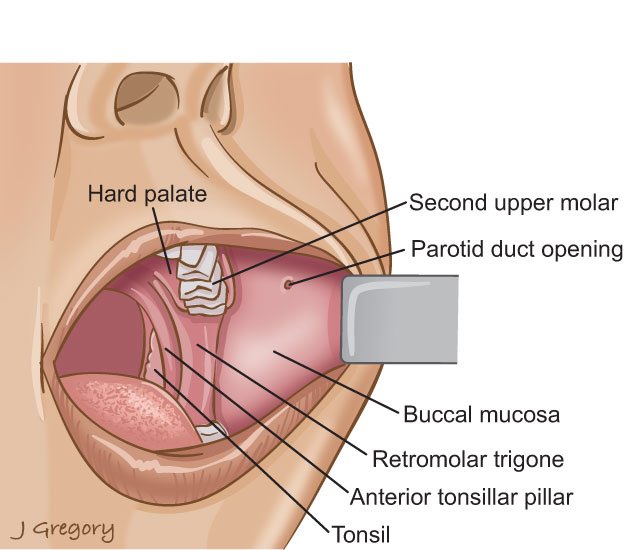 It is intended only as applications and compresses. It is recommended to carry out the procedures between meals and at the same time reduce salivation. In order for the action to be targeted and soft, you must follow such rules as:
It is intended only as applications and compresses. It is recommended to carry out the procedures between meals and at the same time reduce salivation. In order for the action to be targeted and soft, you must follow such rules as:
- check the absence of allergies to the components of the product;
- apply a thin layer;
- do not eat or drink for 30 minutes;
- the number of sessions per day is 4-5;
- do not exceed the daily dosage.
If irritation and itching appear in the oral cavity, the drug should be changed immediately.
Prevention of black spots in the mouth
To prevent the problems associated with inflammation and rashes in the mouth, you need to follow a few simple rules, namely:
- maintain immunity at the required level;
- observe the rules of hygiene;
- wash hands after visiting the street;
- visit the dentist every six months.
If you have any problems, you should immediately consult a doctor for diagnosis and treatment.
Prevention of oral cancer » Polyclinic No. 2 Cherepovets
1. Check your face, paying attention to all tumors, sores and sores, moles and pigmentation changes. Carefully examine your face in a mirror in bright light, looking for any changes that could be symptoms of oral cancer.
- Particular attention should be paid to any discoloration of the skin, sores, moles and birthmarks, as well as any swelling on the face.
- You should also pay attention to whether you have tumors, swellings and “bumps” on one side of the face that are absent on the other half of the face.
- The face is normally almost symmetrical, there should be no serious differences between the left and right halves.
2. Palpate the neck for swelling. Slowly and gently palpate (palpate) the neck with your fingertips. Your task is to find all the swelling, swelling, swelling and painful areas that may be symptoms of oral cancer.
- The neck should be palpated both sides and front.

- Pay special attention to the condition of the lymph nodes – painful, swollen lymph nodes are more than a serious symptom.
3. Check if the pigmentation of the lips has changed . Malignant neoplasms that affect the lips often make themselves felt in the first stages of development precisely by a change in pigmentation.
- Pull the lower lip down.
- Check the inside of the lips for red, white or black patches or sores.
- Still holding the lips with the thumb and forefinger extended, palpate the lips as well.
- Pay attention to anything unusual, namely hard areas and swelling.
- Now repeat the procedure with the upper lip.
4. Check the cheek mucosa for changes in pigmentation. Open your mouth as wide as possible and check the inside of your cheeks for the first signs of oral cancer.
- Pull your cheek back with your finger so you can see better.
- Ulcers and pigmentation changes are a warning sign.

- Now stick your index finger into your mouth and touch it to your cheek. Outside, attach your thumb to the same place.
- Gently run your fingers along your cheek (do not spread them apart), checking it for lumps, lumps, rough or painful areas.
- Now repeat this procedure for the other cheek.
- Also check the area between the cheek and the teeth, the gums next to the lower chewing teeth. All discolorations, tumors and painful sores are alarming symptoms.
5. Check the palate. You need to search for the same thing as before. The palate can be affected by oral cancer, so you just need to make sure. And take a flashlight when you check your palate.
- Gently tilt your head back and open your mouth wide, looking carefully at the oral mucosa.
- If you do not tilt your head back and do not use a flashlight, you will see worse.
- Now, with your very fingertips, palpate the palate as well (don’t forget, you’re looking for lumps and indurations).

6. Check language . Open your mouth wide, stick out your tongue and examine it carefully. Changes in pigmentation or surface texture of the tongue may indicate the onset of cancer.
- Check the tongue from all sides – top, bottom and sides.
- Particular attention should be paid to the sides of the tongue in the part where it is closest to the throat – this is where tongue cancer most often develops.
- Raise the tongue to the palate and check the area where the tongue joins the lower jaw.
- Ulcers, pigmentation changes and other abnormal changes should be your attention.
7. Check the floor of the mouth. Your “instrument” is palpation again. A malignant neoplasm will give out painful areas and seals.
- You should also pay attention to tumors, bumps, swelling, ulcers and sores.
8. Seek professional medical attention if you experience any of the warning signs. If you still find abnormal changes in your mouth, sores, sores or painful areas that do not heal even after 2-3 weeks, see a dentist for an oral examination and a cancer screening text.




